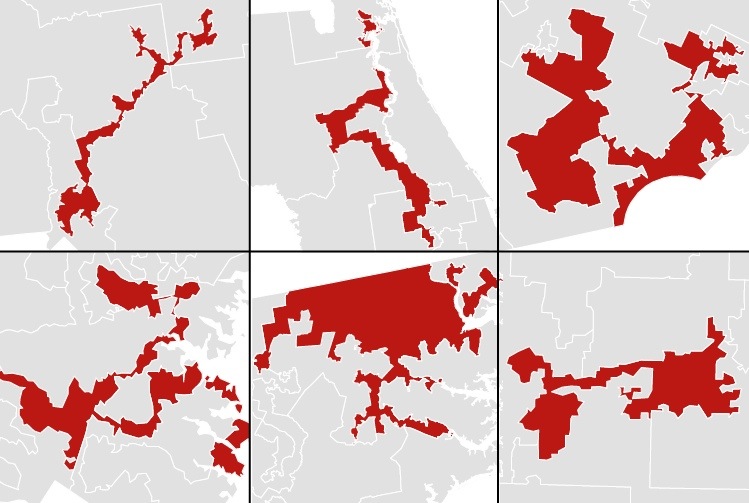Christopher Ingraham has a recent piece up at Wonkblog ridiculing some of the more bizarrely shaped congressional districts across the country. Ingraham argues that Republicans have many more congressional seats than they “should” have given their vote shares in 2012, and “the way Republicans pulled that off was to draw some really, really funky-looking Congressional districts.” These districts are actually captioned as “crimes against geography.”

Few would argue that these districts are aesthetically appealing. However, this piece, like a number of other discussions of redistricting, seems to fetishize what Jonathan Bernstein calls “pretty little districts.” In fact, there is no reason congressional districts should be beautiful. As John Sides recently noted, creating nice-looking districts can often undermine districts’ far more important political qualities.
Colorado’s state redistricting guidelines call for districts to be assessed in terms of the following qualities:
1. Equal population size.
2. Absence of racial discrimination.
3. Compactness and contiguity of districts.
4. Preservation of county or municipal boundaries.
5. Preservation of communities of interest.
Now, notably, some of these goals run right up against each other. One person may see a district containing a majority of African American voters as preserving a historic community of interest; another person might view that as discrimination against other racial groups. Similarly, while a compact district may be desirable, it doesn’t necessarily reflect how people live or what county and city boundaries look like. For example, Denver is a weird looking city. Should a congressional district try to honor those boundaries, or should it break up the city’s voters across district lines in the name of aesthetics?
As Sides nicely sums up, “representation is about people, not polygons.” That is, there’s no reason to think that ugly districts are doing anything wrong other than just being ugly. In fact, sometimes ugly districts are serving valuable goals, such as ensuring representation for a historically under-represented minority group or simply reflecting the bizarre geographic patterns in which people have chosen to live (or in which they have to live thanks to rivers, mountains, etc.). Districts with clean lines, conversely, may well be used for nefarious political purposes. But of the many rights we should be worried about, the right to live in a legislative district that looks attractive on a map must be at the bottom.





